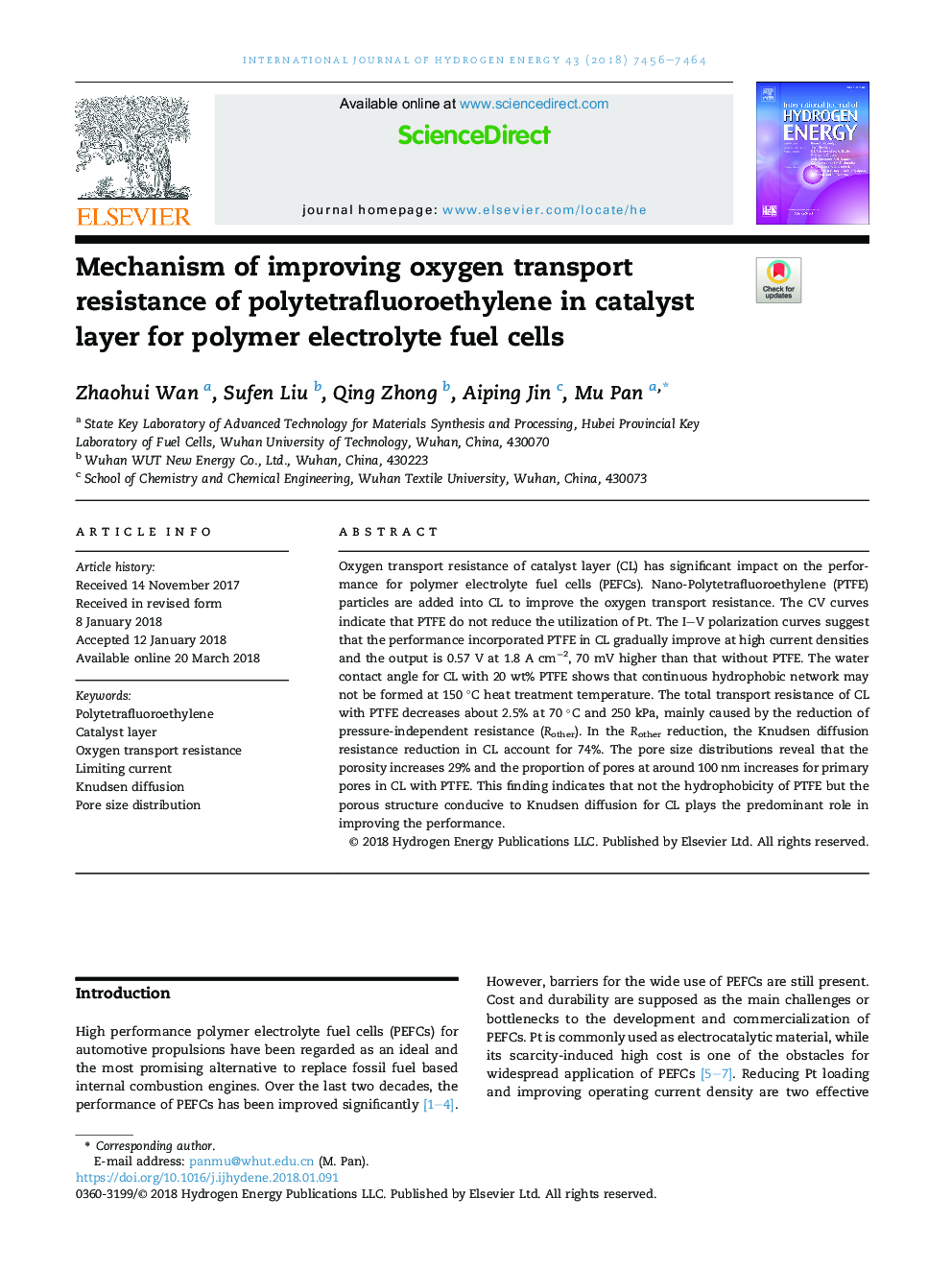| Article ID | Journal | Published Year | Pages | File Type |
|---|---|---|---|---|
| 7706584 | International Journal of Hydrogen Energy | 2018 | 9 Pages |
Abstract
Oxygen transport resistance of catalyst layer (CL) has significant impact on the performance for polymer electrolyte fuel cells (PEFCs). Nano-Polytetrafluoroethylene (PTFE) particles are added into CL to improve the oxygen transport resistance. The CV curves indicate that PTFE do not reduce the utilization of Pt. The IV polarization curves suggest that the performance incorporated PTFE in CL gradually improve at high current densities and the output is 0.57 V at 1.8 A cmâ2, 70 mV higher than that without PTFE. The water contact angle for CL with 20 wt% PTFE shows that continuous hydrophobic network may not be formed at 150 °C heat treatment temperature. The total transport resistance of CL with PTFE decreases about 2.5% at 70 °C and 250 kPa, mainly caused by the reduction of pressure-independent resistance (Rother). In the Rother reduction, the Knudsen diffusion resistance reduction in CL account for 74%. The pore size distributions reveal that the porosity increases 29% and the proportion of pores at around 100 nm increases for primary pores in CL with PTFE. This finding indicates that not the hydrophobicity of PTFE but the porous structure conducive to Knudsen diffusion for CL plays the predominant role in improving the performance.
Keywords
Related Topics
Physical Sciences and Engineering
Chemistry
Electrochemistry
Authors
Zhaohui Wan, Sufen Liu, Qing Zhong, Aiping Jin, Mu Pan,
